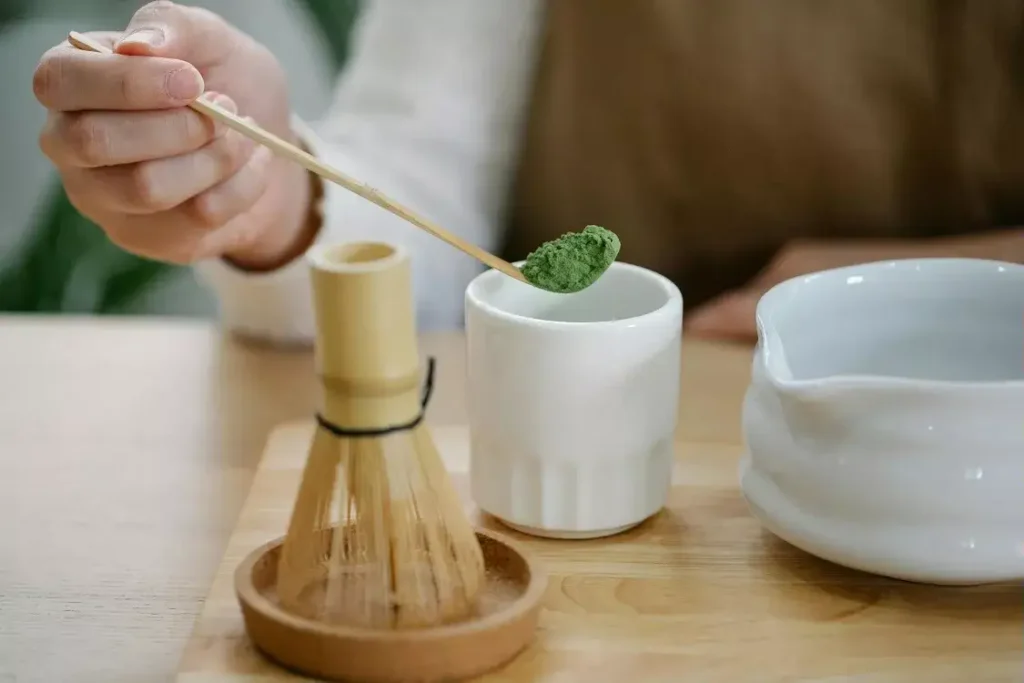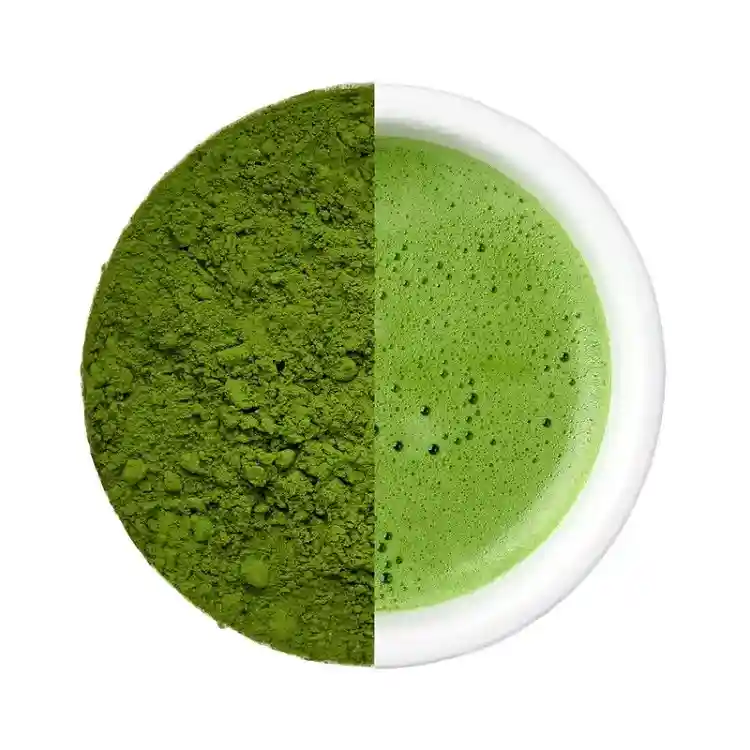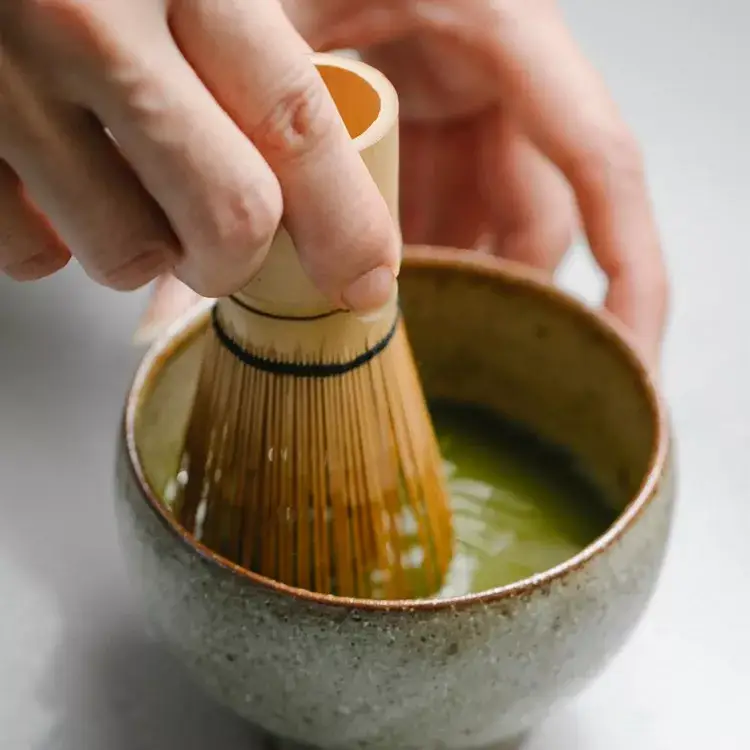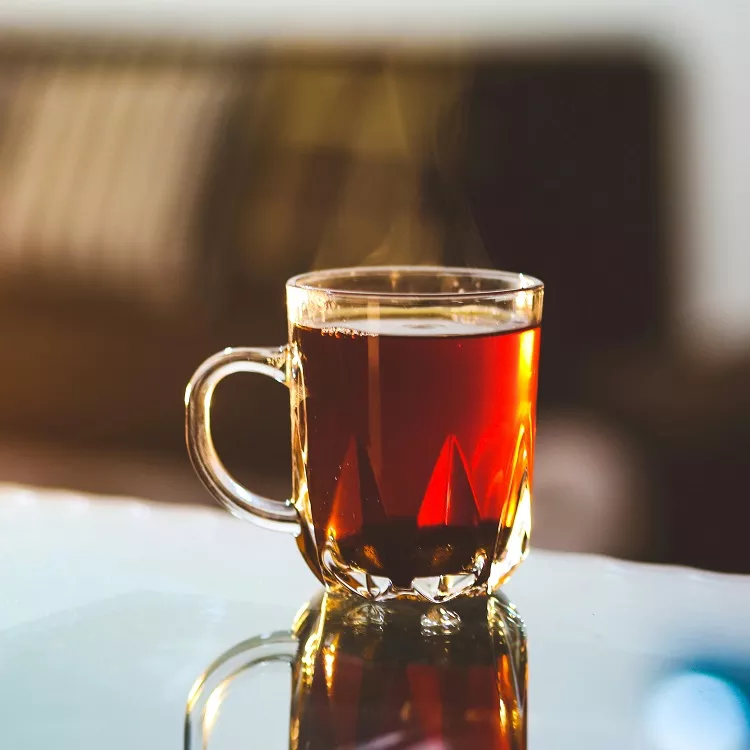The taste of matcha tea is deep, multifaceted, and at the same time very delicate. It is a combination of creamy softness, herbal freshness, and distinct umami. This profile is formed at the cultivation stage: the tea bushes are shaded to increase the content of chlorophyll and amino acids. After the leaves are harvested, they are steamed and powdered. Matcha green tea has a lively, harmonious flavor that reveals itself gradually. It gives you energy and vigor without sudden mood swings or fatigue.
The main notes of high-quality matcha tea
Matcha green tea has a recognizable creaminess and softness. The tea is thoroughly whipped with hot water until it forms a foam, which forms the delicate texture of the drink. Fresh herbal and vegetal flavors are always present in the taste of green matcha. They appear due to the shading of the tea bush before harvesting and the high concentration of chlorophyll, as well as steam treatment. But the character of matcha green tea is set by the fifth flavor – umami, the same fifth flavor that resembles seaweed or a light broth. It arises from the high content of amino acids, primarily L-theanine. Together, these three components (creaminess, herbaceousness, and umami) are what distinguish a quality green matcha.

The influence of raw material quality on the taste of the match
The taste of matcha tea largely depends on the harvest, as it is the quality of the raw materials that determines the richness and richness of the flavor. The leaves of the first harvest, young and tender, with a pronounced umami and slight sweetness, turn into a powder with a bright green color after processing. The second and third harvests contain coarser leaves, which gives the drink more tartness and light bitterness.
The region of cultivation is also of great importance: the most valuable tea comes from Uji (Japan), where the traditions of processing and cultivating matcha tea have been carefully preserved for centuries.
Chinese matcha green tea, which is more affordable, is usually inferior to Japanese green tea in terms of depth of flavor and aroma.
When choosing matcha tea, it is important to consider not only the cost but also the quality of the crop, the country of origin, and the processing conditions that directly affect the final flavor profile.
Taste differences between green matcha classes
Matcha is divided into several classes, but most often there are two main categories: ceremonial and culinary.
Ceremonial is designed to be consumed in its purest form. It is made from the youngest leaves of the first harvest, has a bright green color, a mild, sweet taste without bitterness.
Culinary is intended for desserts, matcha latte and baking. It is made from more mature leaves and has a tart and rich flavor.
There are also intermediate versions: for daily use or professional use.
Poor quality tea is easy to recognize: bitterness, a yellowish tint to the powder, a fishy or musty smell.
Influence of the cooking method
Water temperature has a significant impact on the flavor of matcha tea. To harmoniously reveal all the notes of green tea, it is optimal to use water at 70-80°C. If you pour boiling water over the powder, the drink will become sharply bitter and lose its balance.
It is also important to whip it properly with a whisk to get a light foam and creamy texture. In the cold version (matcha ice), the taste of matcha changes slightly: a distinct grassy freshness with a sweet aftertaste appears. This drink is perfect on a hot day.
Match flavor of colored species
Matcha colored tea is not made from green tea leaves, but from other plants.
Purple powder is made from sweet potatoes. It has a tart-sweet profile with notes of cinnamon and star anise.
Blue (from anchovy) is floral, with a slight sweetness and spicy aftertaste.
Pink contains dried berries or fruit and has a bright, fruity flavor.
These variations are not a substitute for classic matcha, but are interesting as ingredients for matcha lattes, desserts and are a great way to expand the palette of drinks.

How to distinguish a quality matcha by its organoleptic characteristics
High-quality matcha has a bright green color. This color is a sign of freshness and high chlorophyll content. A yellowish or dull color indicates poor quality or loss of freshness. The aroma should be fresh, grassy and floral, without a fishy or musty odor. The texture should be silky, without lumps, almost powdery. When whipping the matcha, a uniform foam is formed. This is also an indicator of quality. All these signs are easy to check even at home, so choose carefully and the taste will reward you.
Tips for better flavor
To fully reveal the flavor of green matcha, it is important to use it as intended.
Ceremonial matcha is designed to be consumed in its purest form, without any additives. It is whipped with water at a temperature of 70-80°C to preserve its mild, sweet taste and characteristic umami notes.
Culinary matcha has a more pronounced bitterness and is intended to be combined with other ingredients, in matcha lattes, desserts, smoothies or baked goods.
Everyday matcha is suitable for both classic cooking and drinks with milk.
For best results, powdered tea is whipped with a whisk until it becomes light and evenly frothy. This is the sign of the quality of the powder and the correct technique.
Energy and vigor in every sip, which gently opens and lasts longer than the effect of coffee.






